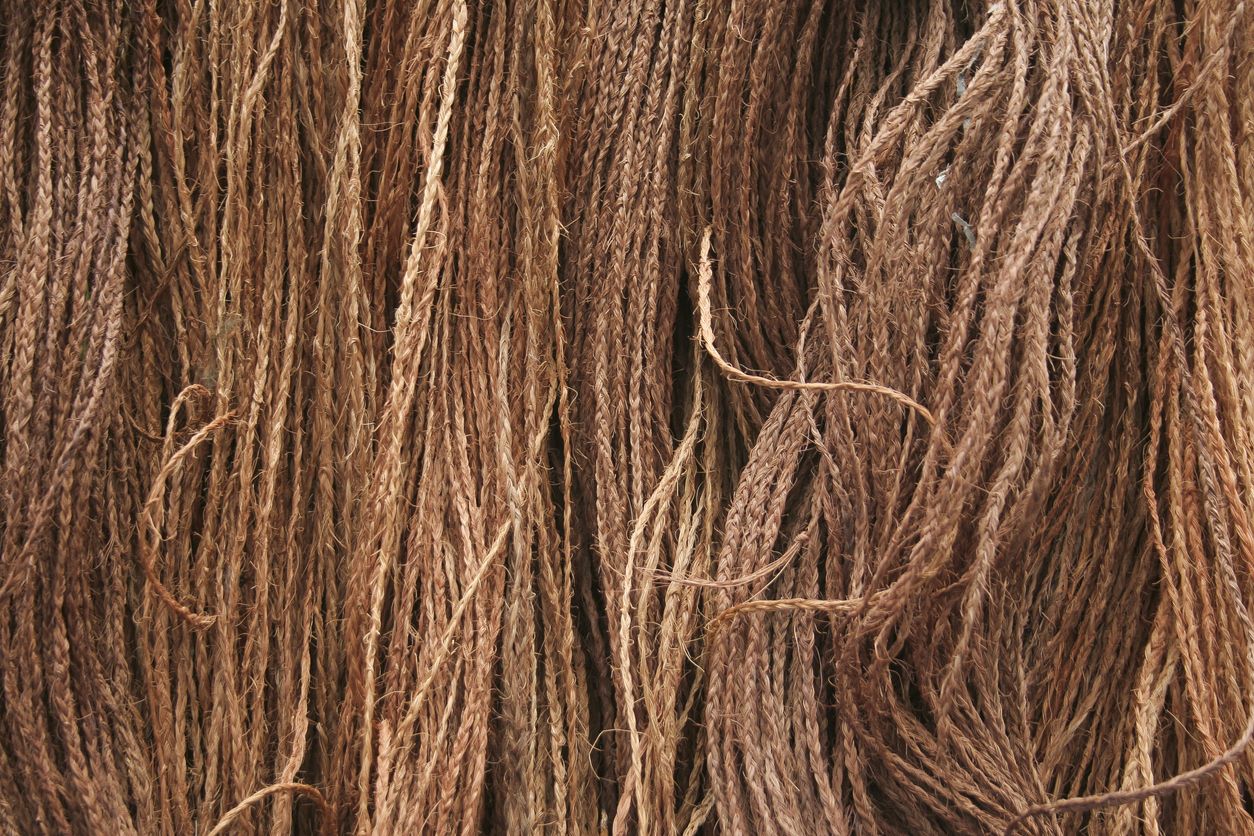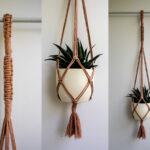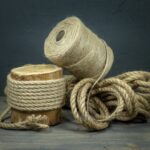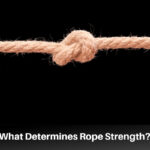Coir rope comes from natural materials in the coconut husk. Coir is water and microbial-resistant, inflexible, and durable.
We have been using coir for centuries for constructing boats. Is also useful in the construction of houses, garden structures, and floor mats. Ancient civilizations tied their boats together with coir rope. They even navigated the dangerous waters of the Pacific and Indian Oceans. Coir didn’t come to the western world until around the 18th century.
To make coir, you must separate the coconut fibers from the rest of the coconut. The process involves splitting the coconut and soaking the fibers. Then, you must dry the fibers and twist them into ropes.

The most common uses of coir rope include:
- Gardening & farming
- Home Decor
- Yard Use
- Fishing & boating
Coir rope consists of natural materials from a coconut’s inner husk. The inner husk sits between the soft and edible meaty inside of the nut and the leathery outer husk. It comprises fibrous pulp, is tan in color, and is rough to the touch.
Coconut coir rope is a natural product, but it’s very durable. It does well in outdoor environments, so you don’t have to worry about it breaking down quickly. The thicker the rope you use, the more durable it is and the longer it will last.
Unlike other natural ropes, Coir has resistance to microbial and saltwater damage. So, it’s particularly useful in marine environments. Plus, coir is light and floats, so boaters can use long lengths without weighing down their boats.
Plus, coir rope and twine are typically cheaper than sisal and hemp, which are other natural ropes.
The History Of Coir
The name “coir” comes from the Tamil and Malayalam languages. In their respective languages, they named the material “cord” and “rope.”
Ancient peoples have been using coconut fiber to make natural ropes for centuries. The Austronesian civilization was the first to domesticate coconuts. They were also the first to use the fibers to make rope. They probably used the rope for building houses and constructing boats.
Early Austronesian civilizations likely used coir rope to produce “sewn” boats and canoes. The vessels comprised wood planks that they bound together with thick coir ropes. The ropes were incredibly durable. These early people were able to explore the Indian and Pacific oceans using their sewn boats.
In the 5th century, early Hawaaiin settlers came to the islands in large canoes. Like the Austronesians, their canoes were held together by coir rope. The people of Micronesia and Polynesia also used coir to build boats. They also used it to make houses, weapons, and tools.
Later, Indian and Arab sailors used coir on their ships as they traveled to Malaya and China. According to old writings, their use of coir on their ships likely began in the 11th century.
Coir rope-making first made it to the UK during the 1840s. Captains Widely, Logan, and Treloar were the first to manufacture coir in Europe. They founded Treloar and Sons in England. Their company manufactured coir rope into floor coverings.
Defibering machines first came to India in the middle of the 20th century.
How To Make Coconut Coir Rope
Ripe coconuts produce sturdier, brown coir. Brown coir tends to be stronger, thicker, and abrasion-resistant. Yet, it is not very flexible because it contains more lignan but little cellulose.
Lignans are polyphenols that reside in plants, especially vegetables, grains, and seeds. Cellulose is the main structural component of plant cell walls and fibers.
We use brown coir to create doormats, sacks, and upholstery padding.
Unripe coconuts produce finer, white coir that we use to make rope and twine. We use green coconuts that have been on a palm tree for about 6-12 months.
White coir fibers are weaker than brown fibers. Still, they are finer and smoother.
Dehusking
To begin making the rope, we must separate the fibers from the rest of the coconut.
Traditionally, farmers manually force the coconut down onto a sharp spike. The spike splits the coconuts, which allows for dehusking. Many coconut laborers dehusk 2,000 or more coconuts a day.
Today, coconut dehusking machines make this job more manageable. They can dehusk around 2,000 coconuts per hour.
Wet-Milling
Coir rope is highly resistant to water damage, so we use water to cure the rope. We use fresh water to set brown coir fiber and saltwater to set white fiber.
Brown fiber husks soak in nets placed in slow-moving fresh water. Such a process is called “wet-milling,” as it allows the fibers in the coconut to soften and swell. During this process, the longer fibers separate from the shorter ones.
Mattress Fibers
The shorter fibers are called “mattress” fibers. Once separated, they go through a sifting process to remove dirt. Then, they dry in the sun before packing. Processors ensure they keep some moisture to maintain a bit of elasticity.
Eventually, the fibers are twisted into a rope by hand or machine.
Retting
First, white coconut husks sit in water for up to 10 months in a process called “retting.”
“Retting” is a process of fiber separation. It involves the moisture from plants, and bacteria, to dissolve cellular tissues. Retting separates the fibers from the plant’s stems. Such a process makes them useful for rope-making. Retting also increases the quality of the fibers. They become softer, have better spinning quality, and have enhanced color.
The retting process releases chemicals and organic substances into the water en masse. These substances decrease water quality. Decreased water quality makes habitats unsuitable for fish and other plants and organisms.
A new, environmentally-friendly retting process was designed in 2009. Researchers from CSIR’s National Institute for Interdisciplinary Science and Technology in Thiruvananthapuram came are credited for this. The biological process extracts the coconut fibers without causing environmental harm. It is unclear if this new process is widely used. Many manufacturers may be sticking to traditional methods.
Second, processors beat the husks with irons rods after retting. Beating the husks separates the fibers.
Thirdly, the fibers dry and receive cleaning.
Lastly, laborers spin the fibers by machine or by hand.
What Are The Uses Of Coir Rope?
Coir rope is a durable and versatile material with various uses.
Gardening & Farming
Coir rope, or twine, is popular among farmers and gardeners because it’s all-natural. You can use coir around your animals and crops without worrying about chemicals. Gardeners are fond of durable coir rope to support their weaker crops.
Once the rope is no longer usable, you can compost it to get healthy soil for the next season. Using natural ropes is the greener option. It helps keep your property, and the rest of the world, healthy.
Oil-Treated Coir Rope
The rope is also helpful for keeping pests out of your fields. Coir rope fences are an excellent alternative to metal or electric fences. They may even help you avoid using harmful pesticides on your crops.
You can treat your coir rope with an oil solution. The solution deters insects and other pests through soaking. The oil solution is all-natural and won’t harm the environment or crops.
Home Decor & Use
Due to their durability, coir rope and twine are popular for making floor mats. The mats are stylish, help keep your floors clean, and last a long time.
Coir rope is also popular for hanging clotheslines out in the yard due to its durability and strength. Likewise, you can use it for hanging bird feeders or houses.
Gardeners aren’t the only ones who can take advantage of coir twine, as it’s also useful for houseplants.
Coir twine can act as a nutritious supplement for peat moss. Plant lovers often use peat moss as part of their soil. Coir pith is usually used for this purpose as it’s more nutritious. Pith comes ground up rather than in rope form, so it’s easier to use as a substrate. Yet, coir twine works well in a pinch.
You can also weave coir into hanging plant pots or baskets, a good alternative to plastic pots.
Fishing & Boating
Due to its durability, coir rope is a popular option for making fishing nets. Boaters often use them around their vessels, too. Yet, its use is not as common now with the invention of synthetic rope materials.
Coir VS Other Natural Ropes
Consult this chart to compare coir rope with other nature ropes:
Comparison Of Natural Ropes
| Coir | Jute | Manila | Cotton | Hemp | Sisal | |
| Strength | Good | Fair | Good | Weak | Fair | Fair |
| Shock Absorbency | Fair | Poor | Poor | Poor | Poor | Poor |
| Elasticity | Poor | Poor | Poor | Poor | Poor | Poor |
| Floats | Yes | No | No | No | No | No |
| Water Absorption | 100% | 100% | 100% | 100% | 100% | 100% |
| Shrinks When Wet | Yes | Yes | Yes | Yes | Yes | Yes |
| Resistant To UV | Good | Good | Good | Good | Good | Good |
FAQs
How Stretchy Is Coir Rope?
Coir rope has a higher concentration of lignin than other natural ropes like sisal or hemp. Lignans make the plant stronger and help protect it from predators.
The lignan makes coir stronger than the other natural ropes. Yet, it also prevents it from being stretchy, so coir is quite inflexible. Unfortunately, its inflexibility makes it slightly weaker. So, its breaking strength is less than that of jute rope.
Which Countries Produce The Most Coir Rope?
The major worldwide producers of coir rope are India and Sri Lanka. India produces about 60% of the world’s supply of white coir. Most of their production occurs in the Pollachi and Kerala State regions. India also consumes over 50% of the world’s coir. Sri Lanka produces about 36% of the world’s brown coir. Together, the two countries make up 59% of the world’s total coir supply.
Worldwide, we produce about 1,276,624 tonnes of coir. Vietnam, Thailand, and Ghana are also significant producers of coir.




